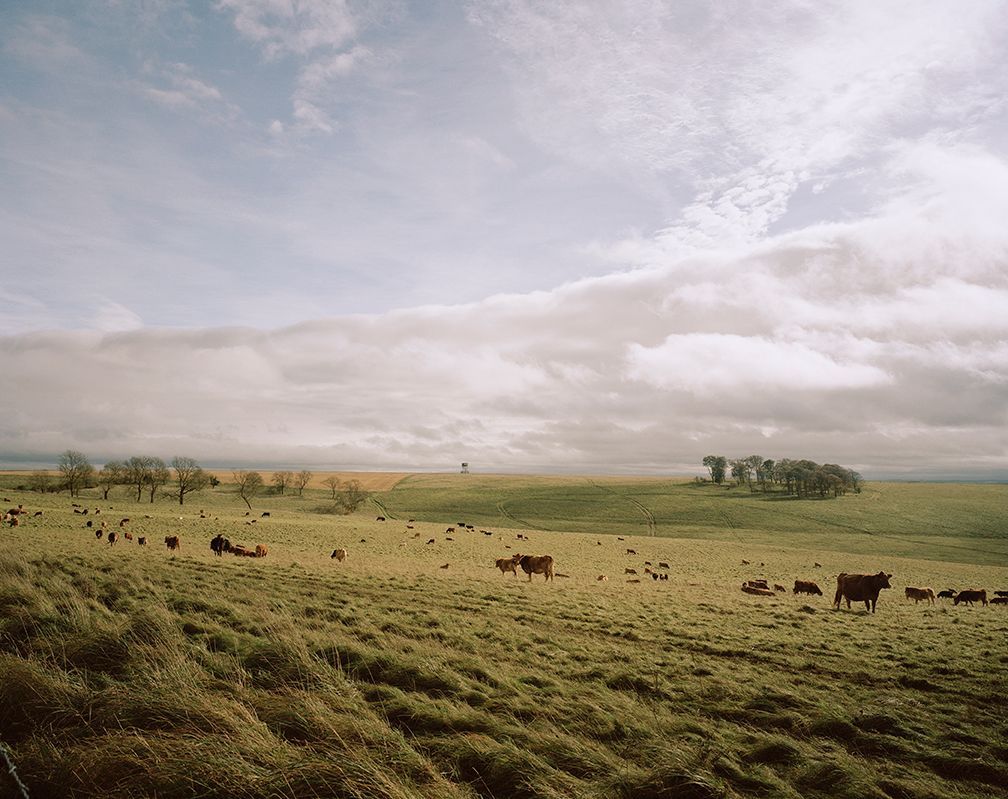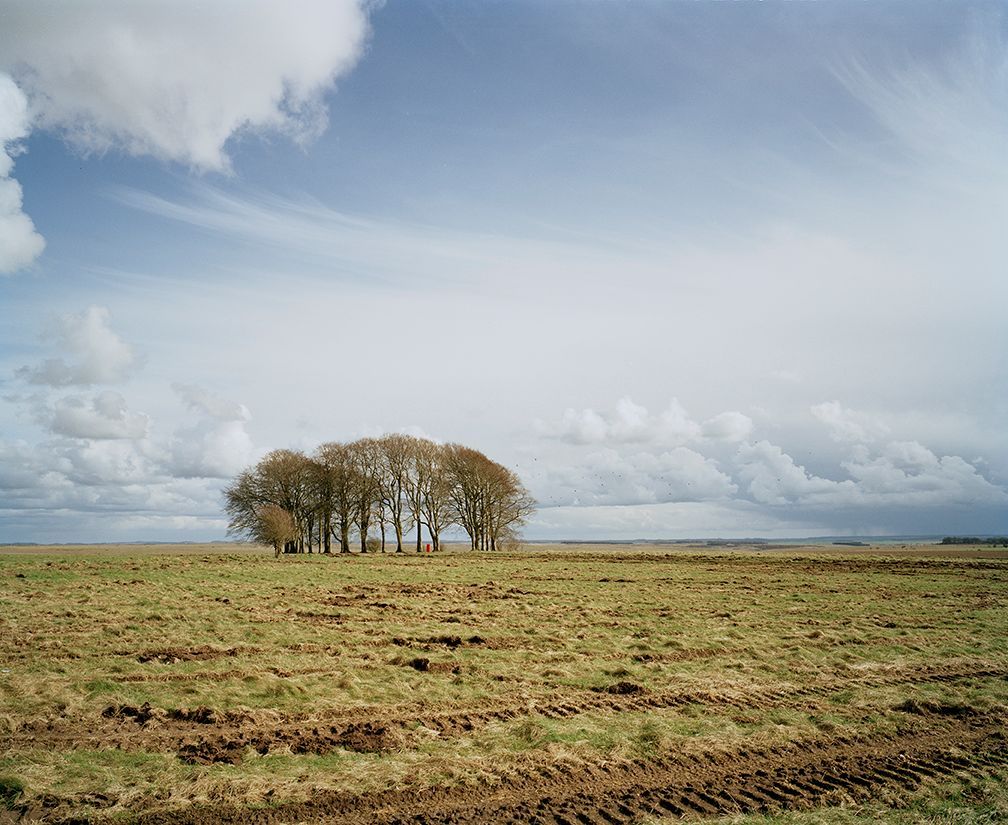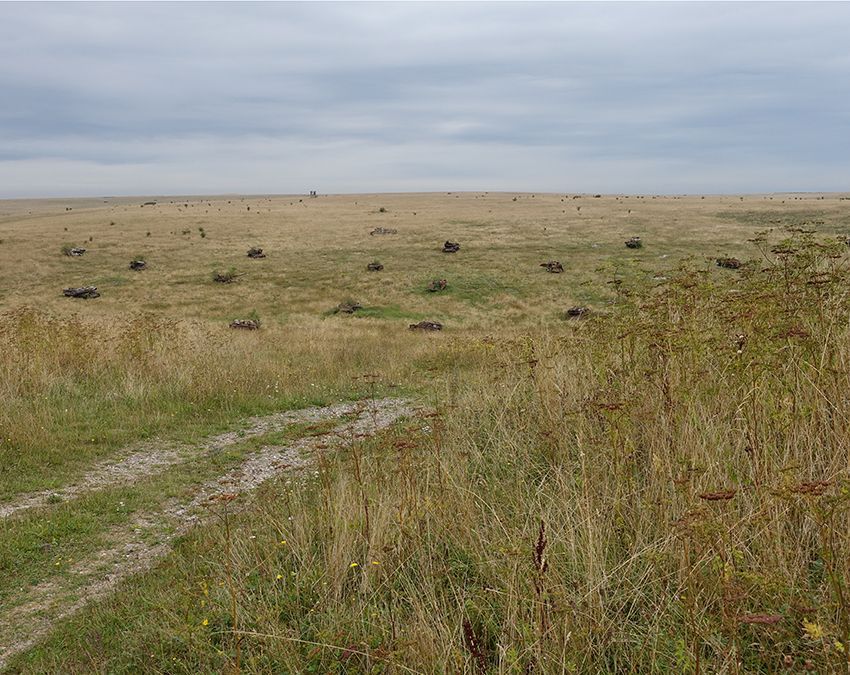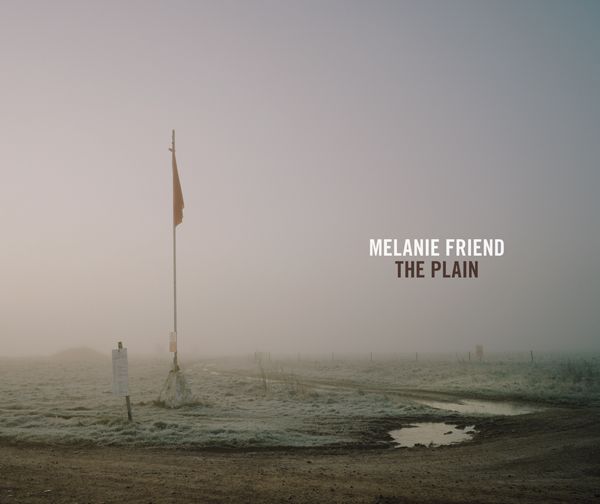blog
Book Review: The Plain by Melanie Friend

The impact area near the White Horse Trail. Splinter proof observation shelter on the horizon. October 2017 @Melanie Friend
I do not find these photographs especially well-crafted, do not deem the framing very appealing but, nevertheless, I feel drawn to them because wide open spaces attract me. In other words, I do not think you can do much wrong when photographing open landscapes. Such was my take after a first and rather casual look at these pics. Upon closer inspection I’ve however realised that quite obviously I was missing what these photographs were all about – for there are objects in the pictures that weren’t meant to be there or so I thought.
The accompanying text “Military-Pastoral Incursions” by Matthew Flintham explains: “Here on Salisbury Plain, Britain’s largest military training area, the photographer Melanie Friend identifies the subtle markers of military power, exclusion and danger, and the uneasy union of the martial and the pastoral.” With this in mind, I see what is in front of me differently. I suspect this is due to the information given and not because of the photographs for my mind now wanders to what is not on the pictures – soldiers in training (running, exercising, shooting – always in groups).

Copse between Redhorn Hill and Lavington Vedette (guard post). The red box provides a connecting point for field telephones. March 2016 @Melanie Friend

Rusty tanks used as targets in Larkhill Artillery Range. August 2016 @Melanie Friend
But back to Flintham’s text. “Friend’s Salisbury Plain is littered with mysterious artifacts, cryptic signs and architectural anomalies.” The concrete examples he gives I would have not seen without his elaborations. What he points at, interprets, insinuates might be of interest to the ones who are into “Military-Pastoral Incursions,” for the ones mainly into visual framing (like me) it is disappointing.
Or, differently put: As a photographic work or a visual undertaking, “The Plain” doesn’t convince me, as a visual education project it however does. Thanks to the scarce but telling notes/captions at the end and the accompanying texts, that is, for only they made me contextualise what was in front of my eyes. Without this information I doubt that I would have even guessed that I was looking at a military zone.
“The Plain” does however not only show a militarised zone but “also presents an English landscape which endures despite or even because of its current custodians, a landscape formed and forged in contradictions.” Right, but contradictions only exist in our minds, photos cannot show them.
There are also interesting and varied “Voices from the Plain” found in his tome. The one that appealed to me the most were (for it captured what I felt after I knew what I was looking at): “There are two contrasting realities: one minute it could be a practsising war zone, and the next minute it’s wonderfully peaceful with the larks singing and wild flowers.” And (for it made me aware. Once again, how photography can enlarge one’s horizon): “It seems whereever I’ve been, there has been some sort of military thing going on. If you look at a map of Britain which has got the military bases on it, it’s quite staggering … it’s quite a job to go somewhere where there’s no military.”

The Plain
by Melanie Friend
Dewi Lewis Publishing, Stockport, England 2021
www.dewilewispublishing.com
Location: Online Type: Book Review, Landscapes
Events by Location
Post Categories
Tags
- Abstract
- Alternative process
- Architecture
- Artist Talk
- artistic residency
- Biennial
- Black and White
- Book Fair
- Car culture
- Charity
- Childhood
- Children
- Cities
- Collaboration
- Community
- Cyanotype
- Documentary
- Environment
- Event
- Exhibition
- Faith
- Family
- Fashion
- Festival
- Film Review
- Food
- Friendship
- FStop20th
- Gender
- Gun Culture
- Habitat
- Hom
- home
- journal
- Landscapes
- Lecture
- Love
- Masculinity
- Mental Health
- Migration
- Museums
- Music
- Nature
- Night
- nuclear
- p
- photographic residency
- Photomontage
- Plants
- Podcast
- Portraits
- Prairies
- Religion
- River
- Still Life
- Street Photography
- Tourism
- UFO
- Water
- Zine

Leave a Reply